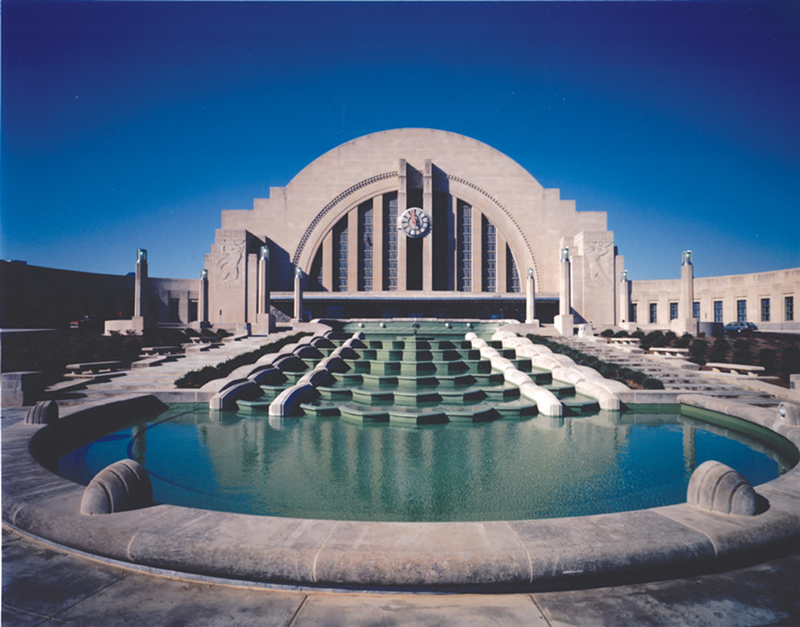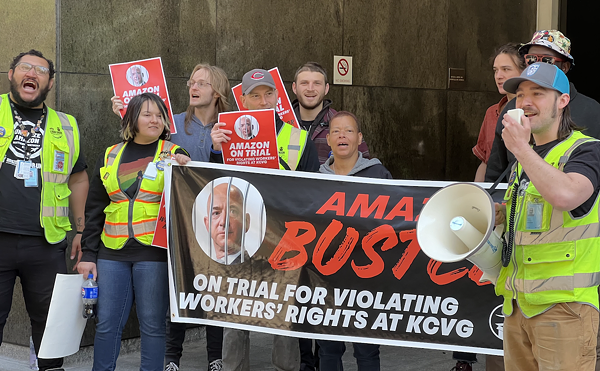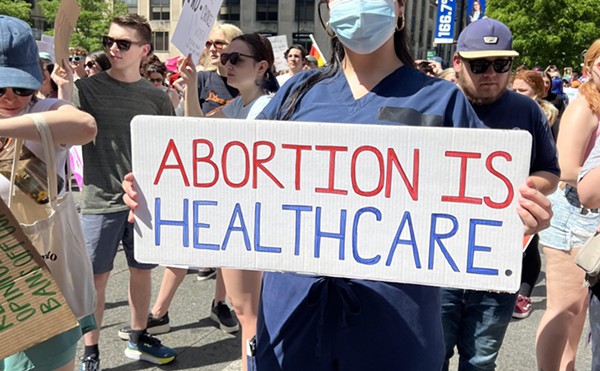
Photo: Union Terminal Archives
Cincinnati's iconic street cars have reached record ridership, spelling good signs, experts say, for spillover into the possible rail travel.
On the campaign trail before his election in 2010, John Kasich vowed to pass on a $400 million federal grant Ohio was set to receive for a possible 250-mile long passenger rail corridor linking Cleveland, Columbus and Cincinnati, commonly nicknamed the 3C Line. It would have been the first time the three cities were linked by rail since 1967.
The arguments were highly polarized. $400 million was a boost, but too few dollars to sustain a rail line, he said. And even if trains were flying south at 89 miles an hour, that was too sluggish to convince the car-dependent to take some of their trips via train instead.
As was expected, Kasich, upon taking office, sent the money back to Washington.
On Wednesday, a week after Amtrak President Steven Gardner talked up the possibility of rail expansion in Ohio once again, theoretically adding Dayton to the 3C line, Gov. Mike DeWine made a 180-degree shift away from his Republican predecessor.
Following an editorial roundtable with Cleveland.com/The Plain Dealer, DeWine said he would be in full support of a feasability study to determine the details of what 3C+D might look like in a few years.
Such a "first step," DeWine said in a statement from the Ohio Rail Development Commission, would funnel a $500,000 grant from the Federal Railroad Administration’s Corridor Identification and Development program into studying Ohio's first interstate passenger rail system connecting its four largest cities. Another $500,000 could go into testing out the plausibility of a line linking Cleveland, Toledo and Detroit. Amtrak would cover the rest of the cost.
But, "We have a lot of questions that need to be answered before we make any commitments,” DeWine warned in the statement. “The information we gather from this effort will help us make informed decisions about federal opportunities for passenger rail in Ohio.” Questions that even Amtrak has to mull over before the March deadline.
Such a "first step," DeWine said in a statement from the Ohio Rail Development Commission, would funnel a $500,000 grant from the Federal Railroad Administration’s Corridor Identification and Development program into studying Ohio's first interstate passenger rail system connecting its four largest cities. Another $500,000 could go into testing out the plausibility of a line linking Cleveland, Toledo and Detroit. Amtrak would cover the rest of the cost.
But, "We have a lot of questions that need to be answered before we make any commitments,” DeWine warned in the statement. “The information we gather from this effort will help us make informed decisions about federal opportunities for passenger rail in Ohio.” Questions that even Amtrak has to mull over before the March deadline.
"It would be, 'How many trains a day? What the level of services in the train? Are they all coach? Are they coaching business class or they coach business class and sleeper? Are they going overnight or daytime?" Marc Magliari, a spokesperson working out of Amtrak's Chicago office, told Scene. "All of those things need to be worked out." He added, "But the first step is asking for the study, and that's what Governor DeWine has said."
The deadline for the application to the Federal Railroad Administration is March 24.
It comes at a time when advocates see great potential in reshaping how Ohioans travel.
In Columbus, as its nearby new Intel plant brings in 20,000-plus workers, transit advocates are exploring new options connecting New Albany with the city center. And in Cincinnati, following a gradual climb since 2017, its iconic street cars have reached record ridership, spelling good signs, experts say, for spillover into the possible 3C+D travel.
The deadline for the application to the Federal Railroad Administration is March 24.
It comes at a time when advocates see great potential in reshaping how Ohioans travel.
In Columbus, as its nearby new Intel plant brings in 20,000-plus workers, transit advocates are exploring new options connecting New Albany with the city center. And in Cincinnati, following a gradual climb since 2017, its iconic street cars have reached record ridership, spelling good signs, experts say, for spillover into the possible 3C+D travel.
"I hate to be cliched about this, but we really are on the cusp of a historic change in the way Ohio moves," said Stu Nicholson, the head of All Aboard Ohio, a passenger train advocate group headquartered in Columbus.
Nicholson, a former exployee for the Ohio Rail Commission, suggested stars may align this time thanks to President Biden's 2021 Infrastructure Bill, which included $66 billion for Amtrak.
The Ohio feasability study, both Nicholson and other transit experts have said, would examine the greatest potential value of a 3C+D line. It could set a price tag for 110-mile-an-hour train cars, which could spell faster commutes, say, from Cleveland to Columbus, currently a 2 hour and 15 minute ride by car.
Nicholson, a former exployee for the Ohio Rail Commission, suggested stars may align this time thanks to President Biden's 2021 Infrastructure Bill, which included $66 billion for Amtrak.
The Ohio feasability study, both Nicholson and other transit experts have said, would examine the greatest potential value of a 3C+D line. It could set a price tag for 110-mile-an-hour train cars, which could spell faster commutes, say, from Cleveland to Columbus, currently a 2 hour and 15 minute ride by car.
The 3C+D line could signify new or upgraded train stations in nine Ohio cities, including Downtown Cleveland, Cleveland Hopkins Airport, Crestline, Delaware, Columbus, Springfield, Downtown Dayton, Sharonville and Downtown Cincinnati, according to a fact sheet on Amtrak's website. Amtrak suggests the line could warrant three daily trips, funneling $126 million back into the state economy annually.
And, as Nicholson said, it would set a price for how the pre-existing Cleveland-Cincinnati railroad line, operated primarily by CSX Transporation, would need to be upgraded to accomodate faster train cars.
"There's considerable work that needs to be done," Nicholson said. "upgrade the corridor with extra track. More passing sightings. Upgraded signals. Safer grade crossings. Perhaps even eliminating some crossings and putting in some overpasses or underpasses for cars and trucks."
If all goes smoothly with the feasibility and market survey, Nicholson suggested that Amtrak's service from Ohio's north to south could start as early as in three to four years.
And, as Nicholson said, it would set a price for how the pre-existing Cleveland-Cincinnati railroad line, operated primarily by CSX Transporation, would need to be upgraded to accomodate faster train cars.
"There's considerable work that needs to be done," Nicholson said. "upgrade the corridor with extra track. More passing sightings. Upgraded signals. Safer grade crossings. Perhaps even eliminating some crossings and putting in some overpasses or underpasses for cars and trucks."
If all goes smoothly with the feasibility and market survey, Nicholson suggested that Amtrak's service from Ohio's north to south could start as early as in three to four years.
This story was originally published by Cleveland Scene, CityBeat's sister publication.
Coming soon: CityBeat Daily newsletter. We’ll send you a handful of interesting Cincinnati stories every morning. Subscribe now to not miss a thing.
Follow us: Google News | NewsBreak | Reddit | Instagram | Facebook | Twitter





